Статьи на эту темуМладше шестидесяти — вход воспрещен!Настоящий! История одного хот-рода
To date, most hot-rods are made solely as a means of aesthetic expression and technical master or masters of creating it, and such machines are intended mainly for the Sunday walks, all sorts of shows and exhibitions. To say in simple language — they are built for outright “show off.” 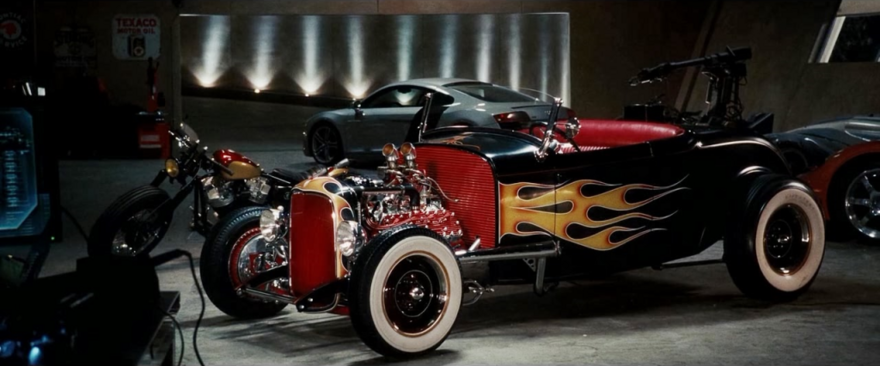
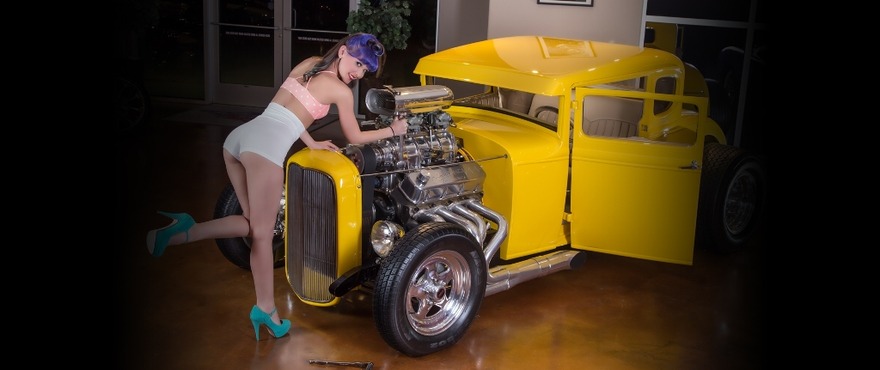
Yet, some in our time building hot rods with the principle of minimalism led to competition, as it was at the dawn of the appearance of this type of machinery.
Desire, coinciding with
The newly added “Race of Gentlemen» (The Race of Gentlemen or just TROG), which we wrote about in detail, contributes to the increasing occurrence of these hot rods, designed primarily for amateur competition. Moreover, the last few years have seen a revival of fashion is on the machines where they are not ”lick" and shiny in the sun appearance is in the first place, rather the contrary.
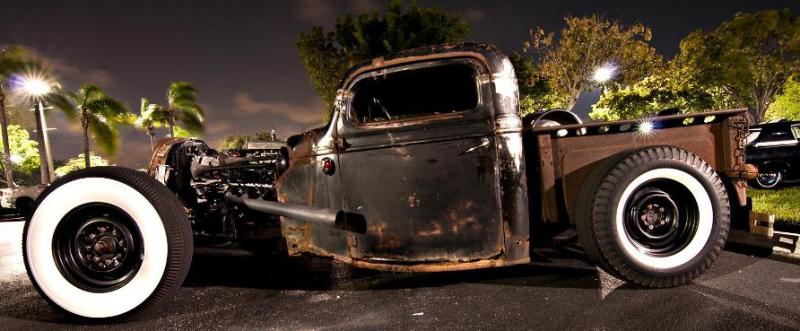

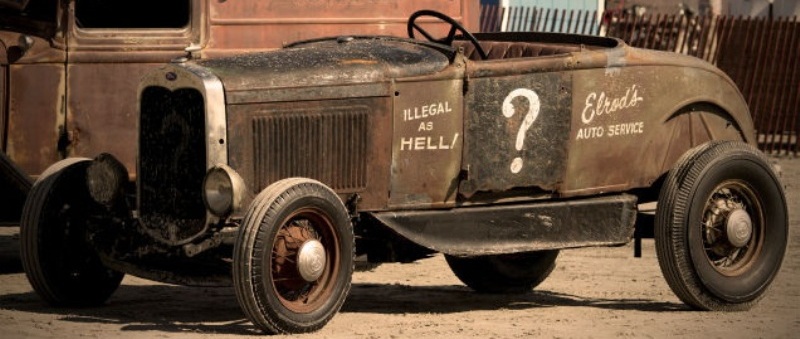
Many fans of “hot rodding” for all “states”, and not only create a simple, ascetic and, more importantly, at the same time quite inexpensive machines for one purpose — to compete on the beach in Wildwood, New Jersey, and similar lesser-known events that We began to emerge in recent times.
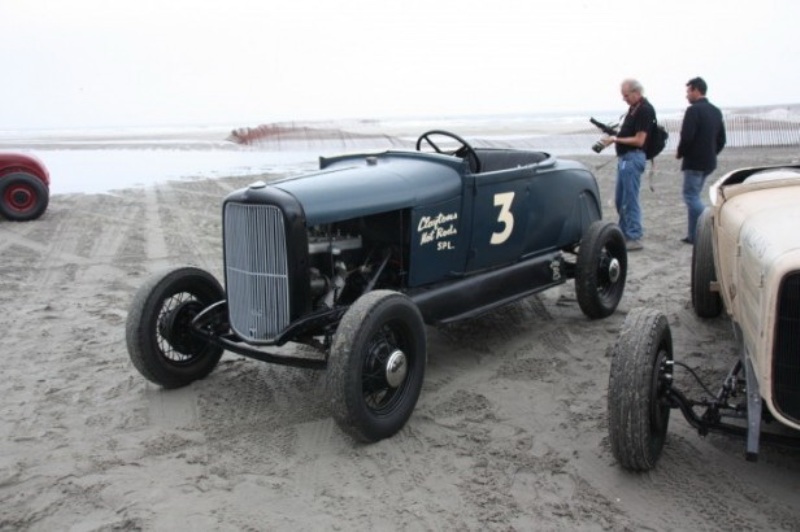
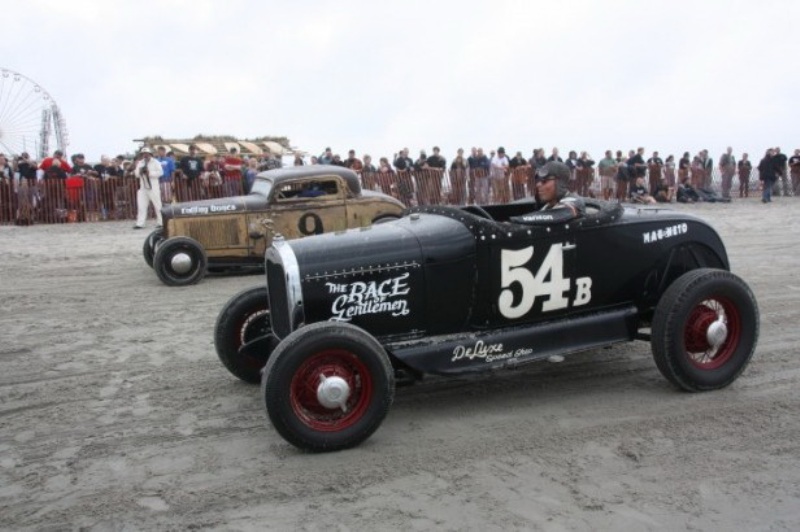
As for Bates Clark, he was able to collect the hot-rod, which is not only suitable for racing, but also for walking, while the budget factor was observed. Tom contributed to several factors.
To start living in Abbottstaun town, Pennsylvania, Bates Clark is “Rodder” with the experience of many years owning his own studio. Moreover, its specialization are just hot rods prewar image and beginning of the 50s.
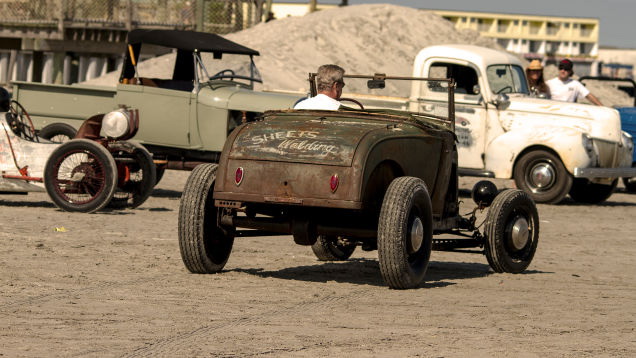
Therefore, at some point, decided to “take a break from orders”, and taking into account that appears Trog, Bates decided to improvise and imagine something, but that it was both a hobby and competition.
The main principle was the minimalism, the question was not so much in savings, but in practicality, because the lower the weight, the greater the speed. Especially because in the race on the sandy beach of extra weight especially contraindicated.
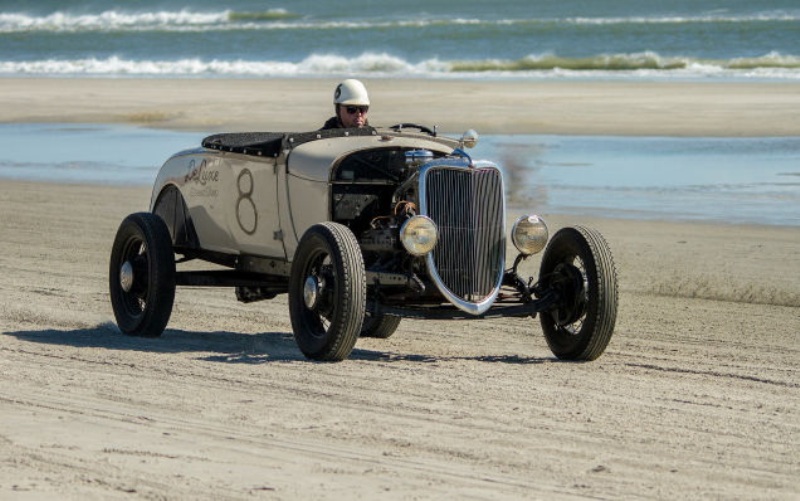
Plus, unlike other “Rodder” on the side of Clark was a distinct advantage — a huge stock of all kinds of vintage components and assemblies in his personal disposal, accumulated in the “shop” over the years, bought at a rally, not to mention the fact that he specialized “hunts” for spare parts for all kinds of dumps …
At Clark's no problem, “where can I get?”, But rather — it is better to what is suitable. Moreover, with the help of his good friends from Bad Donkee Hot Rods, the hot-rod, called 26'Ford, it was assembled “from scratch” in just two months! And the frame, which was taken as its basis, is unique. Unlike most of the other nodes it is not a Ford, but the specific frame of Essex, whose age is almost a hundred years.
Nearly century-old base!
Back in 1919 Hudson company specialized in car above the average price level, the brand launched a budget Essex car, designed for “average family” of the time, in order to compete with a similar offering from Ford and Chevrolet.
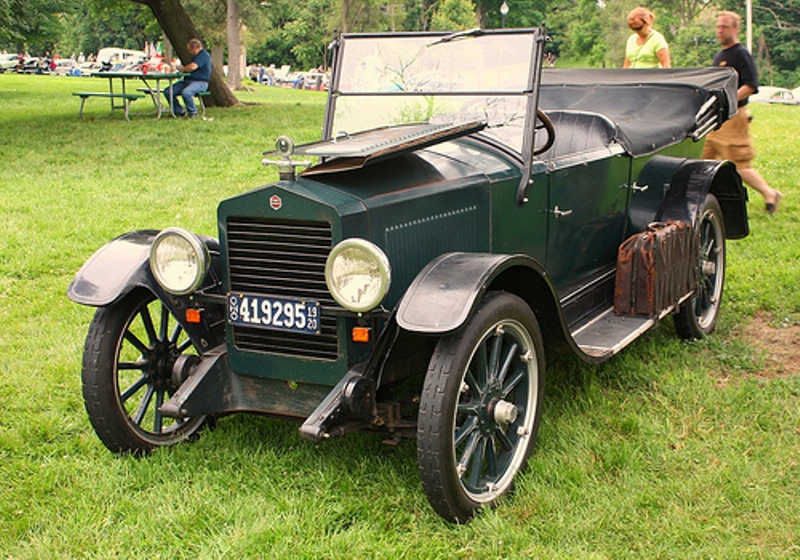
This unprepossessing Essex four became the first in the history of affordable sedan, whose sales and his followers to the mid-20s brought Hudson to third place behind Ford and Chevrolet in terms of all US manufacturers, which at the time was much more than a hundred …
Indeed, if Henry Ford with his line assembly give laurels create the first car of the budget as a whole, the Essex is considered the first to have successfully offered the available subsequently closed car.
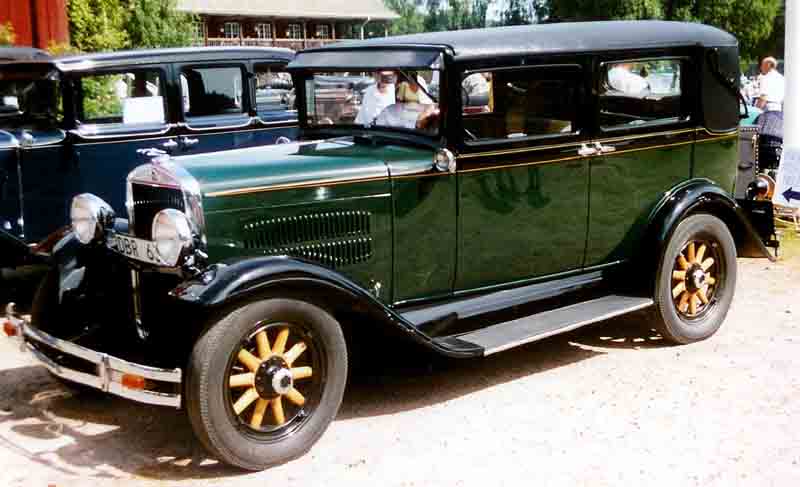
Totally for 13 years, it was produced and sold more than 1.3 million vehicles under the brand Essex!
In the early 30s the brand turned in favor of the other with an exotic name Terraplane, which literally translates as “earth plane”. However, it was Essex chassis, affordable and at the same time extremely strong, have found their place not only on public roads, but also in motor racing at the time.
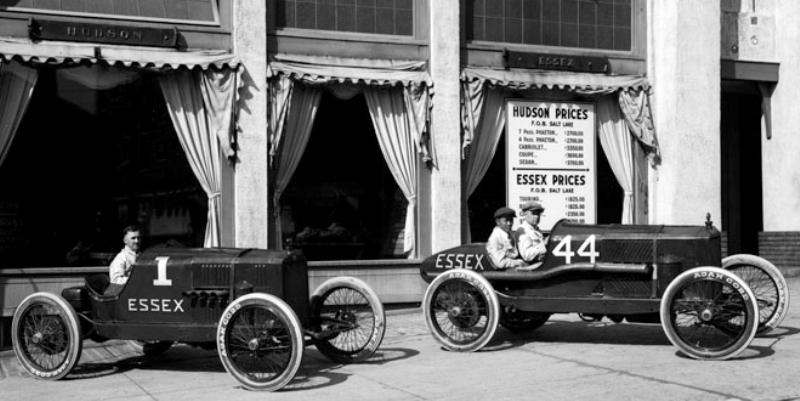
Part of the reason lay in the fact that in order to compete with the powerful blue oval, Essex performed with a large margin of safety and reliability. Hudson Essex with even conducted demonstration tests the endurance of their machines, which have been certified by the most prestigious automobile body in the United States — the American Automobile Association (AAA).
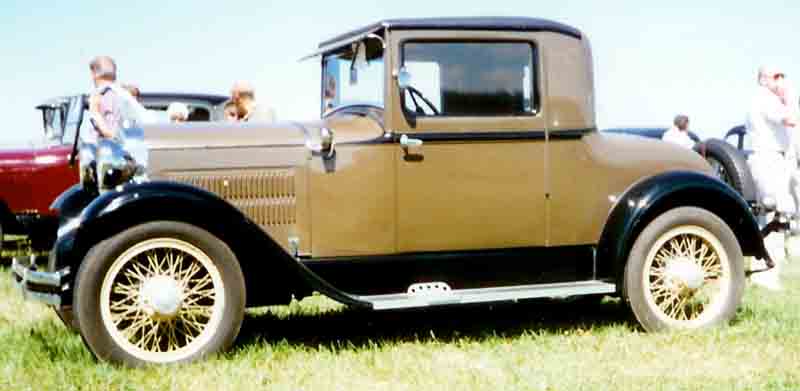
Due to the ease and Essex torsional rigidity of the frame, from the very beginning the mother started using Hudson Essex car in various races. We can not say that an important role in this play and branded row "sixes» Hudson with their balanced crankshaft — the know-how of the manufacturer at that time …
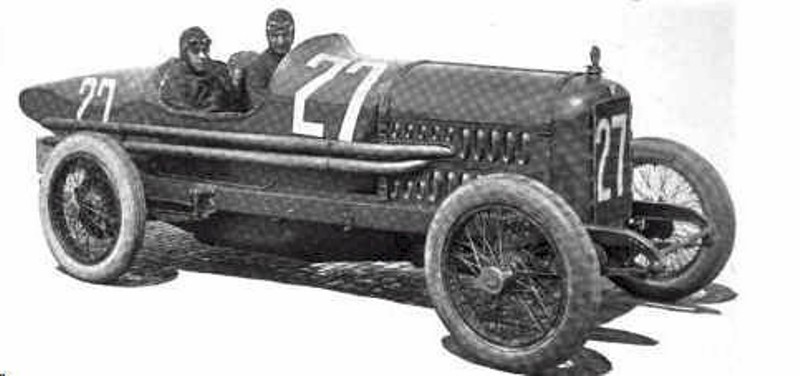
For example, on such a car was won the famous hill-klimb Pikes Peak in 1923, as well as a lot of circuit racing all the “states”.
Next photo illustrates article explaining what is hidden advantages Essex proprietary frame. For example, if usually for wheelbase 108–110 inches (slightly less than three meters) using a metal profile of 4.5 inches, in this case applied to a 6-inch. Cross-section originally designed to increase resistance to stress in torsion.
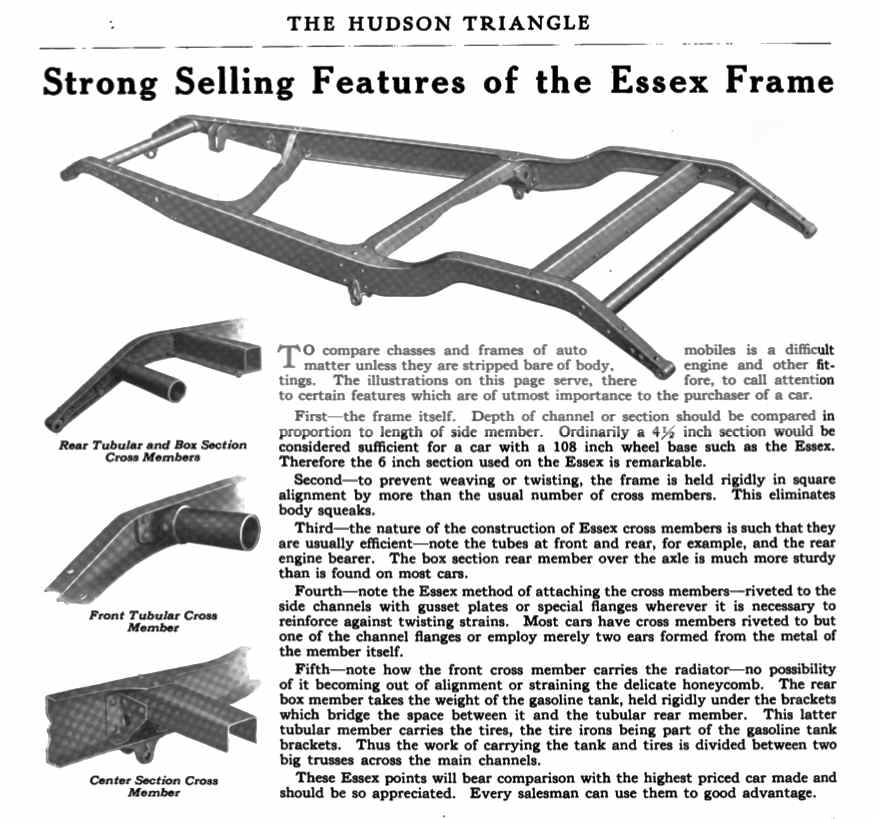
Further rigidity frame attached “fear” cylindrical cross in the corners of the front and rear. Also important was the method of fixing themselves and cross-sections using riveting, as well as additional brackets on each side, which are not often found in other manufacturers, especially in the “mass-production” …

This unprepossessing Essex four became the first in the history of affordable sedan, whose sales and his followers to the mid-20s brought Hudson to third place behind Ford and Chevrolet in terms of all US manufacturers, which at the time was much more than a hundred …
Indeed, if Henry Ford with his line assembly give laurels create the first car of the budget as a whole, the Essex is considered the first to have successfully offered the available subsequently closed car.

Totally for 13 years, it was produced and sold more than 1.3 million vehicles under the brand Essex!
In the early 30s the brand turned in favor of the other with an exotic name Terraplane, which literally translates as “earth plane”. However, it was Essex chassis, affordable and at the same time extremely strong, have found their place not only on public roads, but also in motor racing at the time.

Part of the reason lay in the fact that in order to compete with the powerful blue oval, Essex performed with a large margin of safety and reliability. Hudson Essex with even conducted demonstration tests the endurance of their machines, which have been certified by the most prestigious automobile body in the United States — the American Automobile Association (AAA).

Due to the ease and Essex torsional rigidity of the frame, from the very beginning the mother started using Hudson Essex car in various races. We can not say that an important role in this play and branded row "sixes» Hudson with their balanced crankshaft — the know-how of the manufacturer at that time …

For example, on such a car was won the famous hill-klimb Pikes Peak in 1923, as well as a lot of circuit racing all the “states”.
Next photo illustrates article explaining what is hidden advantages Essex proprietary frame. For example, if usually for wheelbase 108–110 inches (slightly less than three meters) using a metal profile of 4.5 inches, in this case applied to a 6-inch. Cross-section originally designed to increase resistance to stress in torsion.

Further rigidity frame attached “fear” cylindrical cross in the corners of the front and rear. Also important was the method of fixing themselves and cross-sections using riveting, as well as additional brackets on each side, which are not often found in other manufacturers, especially in the “mass-production” …
Rolling up his sleeves
It would not have been good frame, nearly a century of age could not affect it. Moreover, despite its relatively small length of less than 4.5 meters, Clark would still shorter hot-rod. He shortened its front and rear, as well as produced a brand new cross-section. After that bobbed-view (extremely shortened) was to complete what Bates literally “stuck” on the rear axle pickup 48'Ford directly on the frame end.
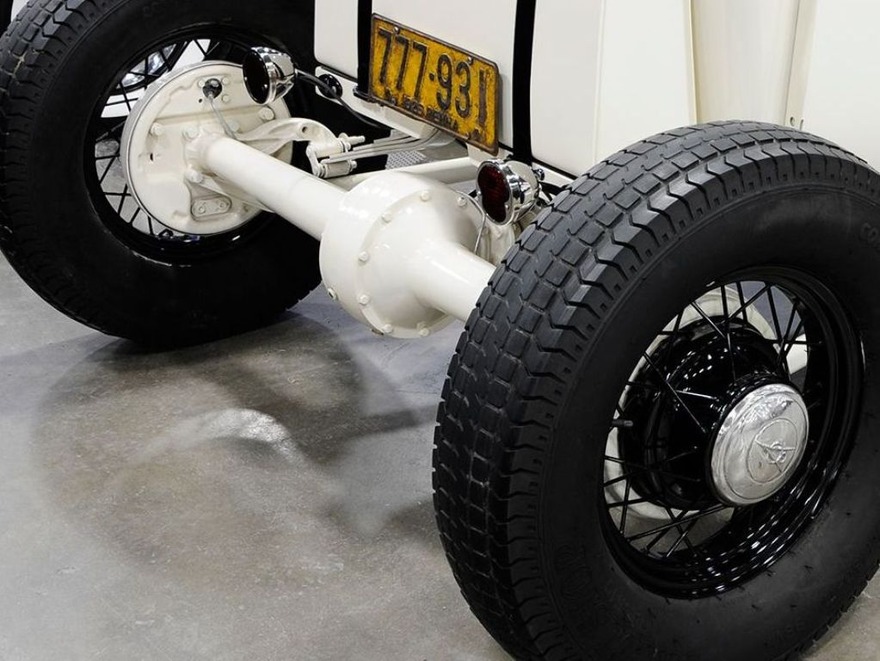
It supports quite clever suspension in a non-traditional fixed the front ends of the springs to the frame of the Ford Model T, which assisted by half-arms of the same 48'Ford and more familiar long longitudinal traction in the spirit of classic hot rods that extend almost to the center of the frame.
Front all a bit more classical,. Here it is used a continuous axle with a double bend from the early Dodge, which “hung” knuckles 40'Ford. All this is mounted on a pretty little soft leaf springs from the Dodge, which operate special lever and the faint shock Armstrong.
Stopping is not slow hot-rod designed to drum brakes on all four wheels — from 46'Ford 40'Ford back and front. The master cylinder is all from the same pickup 48'Ford, while all brake lines are made from scratch, and we are talking exclusively about the steel tubes.
Style and retro bow hot race give needled 17-inch wheels from 34'Ford, shod «skinny» Coker / Excelsior, protector which is equally suitable for asphalt and competition on the dense sand beach, usually soaked with moisture.
As far as the driving force, and then Clark he has remained faithful to his ideas, finding retro-saving performance balance.

It supports quite clever suspension in a non-traditional fixed the front ends of the springs to the frame of the Ford Model T, which assisted by half-arms of the same 48'Ford and more familiar long longitudinal traction in the spirit of classic hot rods that extend almost to the center of the frame.
Front all a bit more classical,. Here it is used a continuous axle with a double bend from the early Dodge, which “hung” knuckles 40'Ford. All this is mounted on a pretty little soft leaf springs from the Dodge, which operate special lever and the faint shock Armstrong.
Stopping is not slow hot-rod designed to drum brakes on all four wheels — from 46'Ford 40'Ford back and front. The master cylinder is all from the same pickup 48'Ford, while all brake lines are made from scratch, and we are talking exclusively about the steel tubes.
Style and retro bow hot race give needled 17-inch wheels from 34'Ford, shod «skinny» Coker / Excelsior, protector which is equally suitable for asphalt and competition on the dense sand beach, usually soaked with moisture.
As far as the driving force, and then Clark he has remained faithful to his ideas, finding retro-saving performance balance.
Creatively under the hood …
Bates used the modest «banger» — 4 cylinder 41'Ford 118 inches, that is, the working volume is even smaller than two liters. This is an old-fashioned motor «flatty» flat head and the cylinder side-valve. The engine was moved and “stuffed” completely original features. In other words, all of its piston has been carefully tailored and balanced.
But the main “miracles” are created here on top. Bates went to the trick, using power increase is quite rare supercharger of Graham, that he once found in one of the old barns on a car junkyard …
This is the know-how developed and applied in the workshop Graham brothers in 1934, the year. This compressor (mechanical supercharger) driven by a belt from a small system and cardan directly from the engine crankshaft.
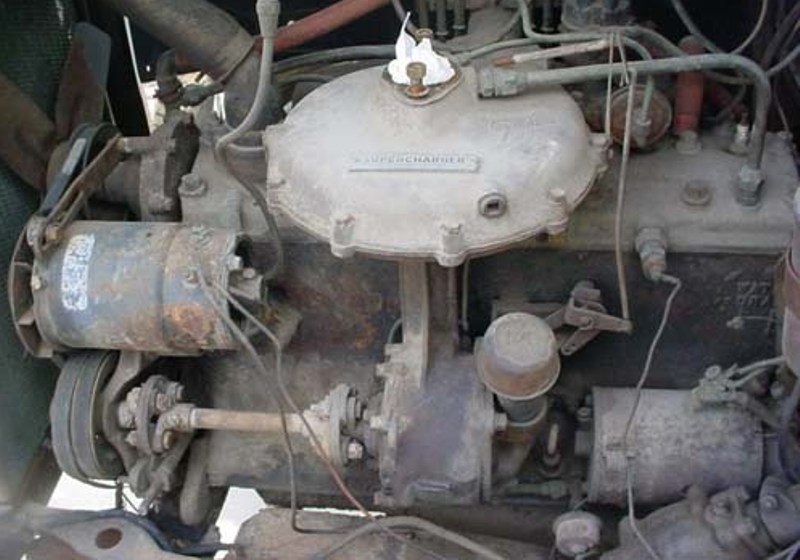
And if the compressor is initially intended exclusively for V8 engines, later it began to be used for in-line engines. It blowers have become a hallmark of the brand machines eponymous Graham …
Intake, “incorporated” Stromberg carburetor 97, was made by Bates, including a unique air intake.
As an ignition system used an old-fashioned magnetos, while not clever exhaust has also been made «in house», and the foundation for proper tailpipe served … torsion tube from 36'Ford, inside which initially revolved propshaft, driving the car …
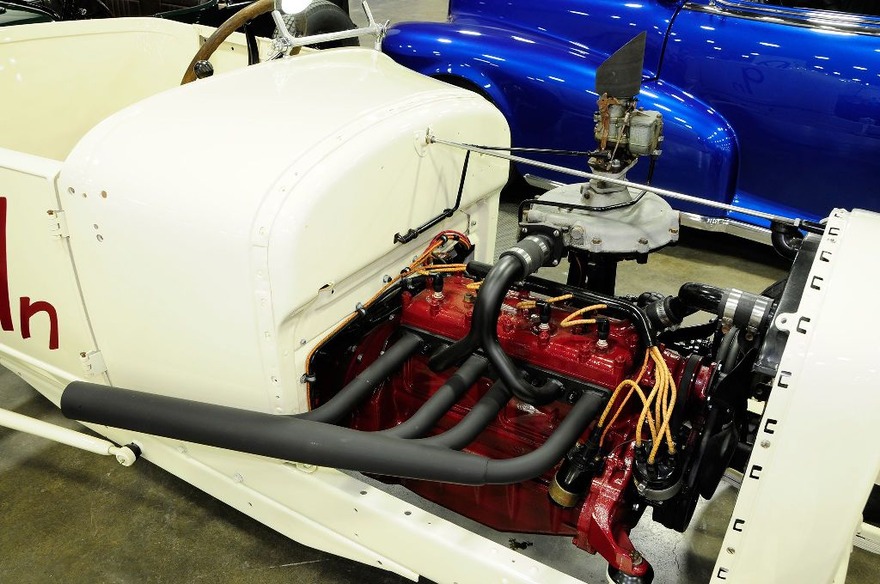
As the PPC was also used another “family” unit from 46'Ford.
But the main “miracles” are created here on top. Bates went to the trick, using power increase is quite rare supercharger of Graham, that he once found in one of the old barns on a car junkyard …
This is the know-how developed and applied in the workshop Graham brothers in 1934, the year. This compressor (mechanical supercharger) driven by a belt from a small system and cardan directly from the engine crankshaft.

And if the compressor is initially intended exclusively for V8 engines, later it began to be used for in-line engines. It blowers have become a hallmark of the brand machines eponymous Graham …
Intake, “incorporated” Stromberg carburetor 97, was made by Bates, including a unique air intake.
As an ignition system used an old-fashioned magnetos, while not clever exhaust has also been made «in house», and the foundation for proper tailpipe served … torsion tube from 36'Ford, inside which initially revolved propshaft, driving the car …

As the PPC was also used another “family” unit from 46'Ford.
…outside…
All kind hot rod Bates also exudes a nostalgic “bow”, recalling the very first hot rods. As a basis he took the body from 26'Ford, from what became known exactly what is unspoken tradition for these hot rods. Body seriously narrowed back almost 20 cm, and the rear panel, made “from scratch”, “bound” side panels together.
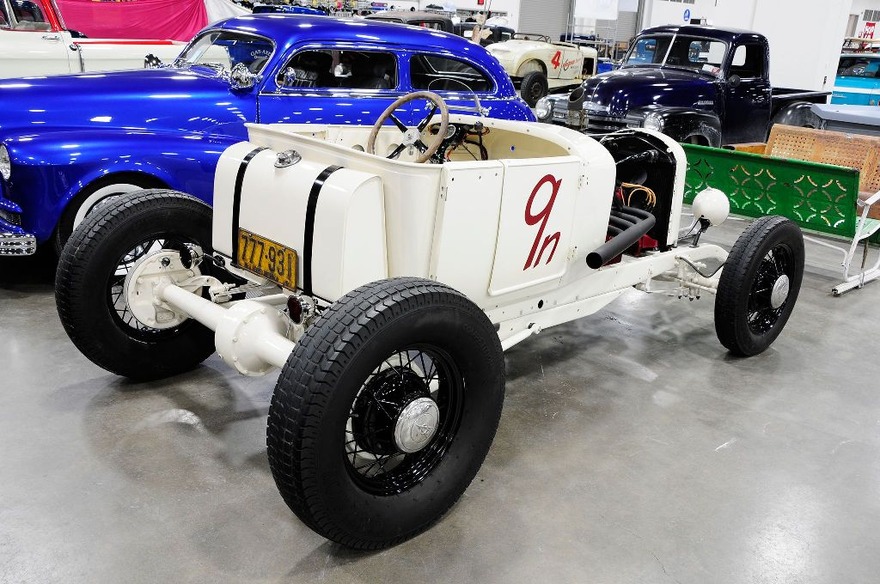
With two huge clamps attached to her small flat tank, giving a unique charm and sports fry it hot race, not having even a hint of the trunk.
Clark could not do without a few “details” like a modest, but at the same time stylish headlamps, and he does not remember from what they were a car, especially the rear brake lights, which became one of the few parts of the hot rod, covered with “chrome”. Special irresistible adds a small windshield Brooklands in the spirit of sports car 30-h …
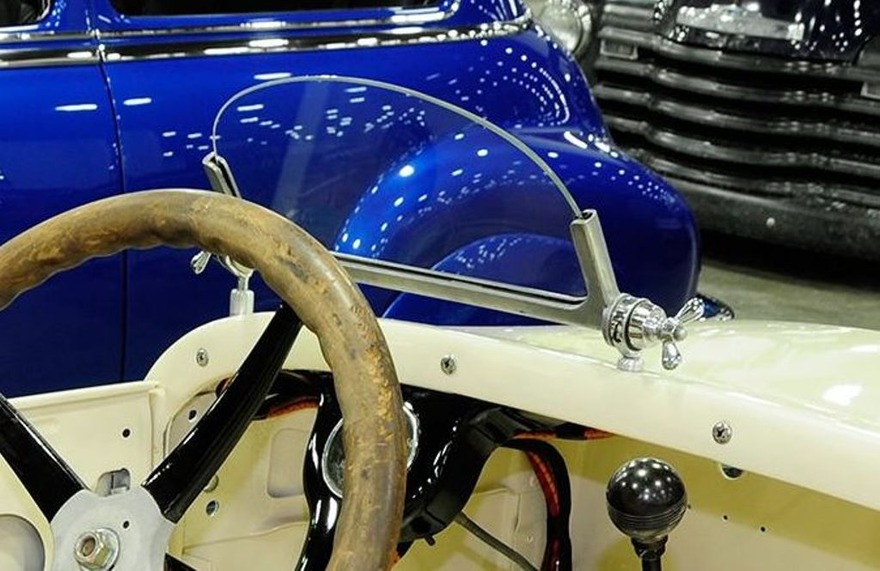
modest almost matte white (paint U-Tech) has been selected for color. The final painting strokes engaged Jane Skidmore nicknamed «HotRod Jen» and work has gone into her glory. Against this background of snow-white contrast is particularly distinguished and stylish painted in red and black motor “accents” such as exhaust, wheels, lights brackets and central grille …
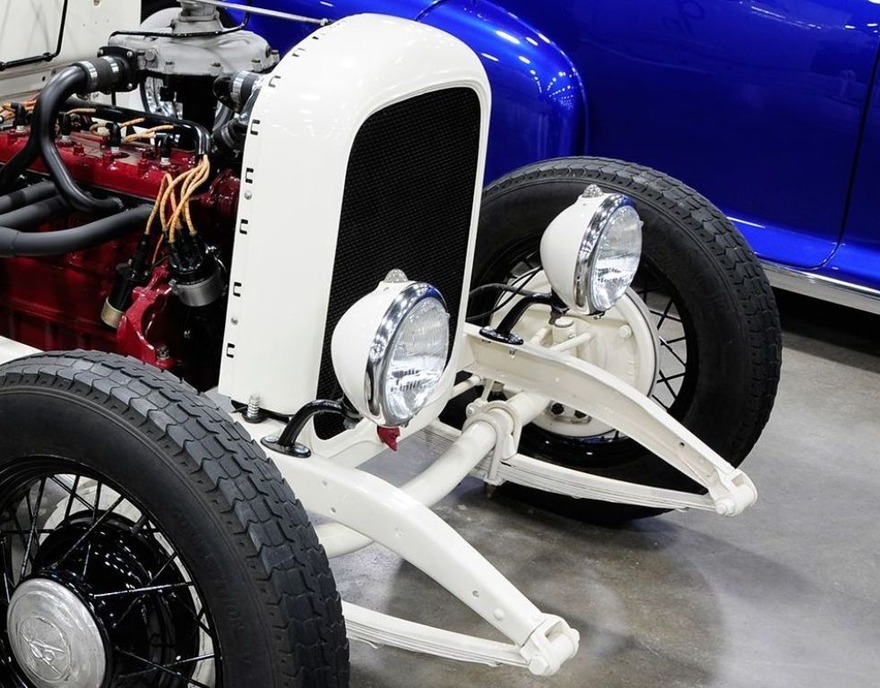
It is noteworthy that the grille is not just then Ford-ovsky and from 28'Studebaker.

With two huge clamps attached to her small flat tank, giving a unique charm and sports fry it hot race, not having even a hint of the trunk.
Clark could not do without a few “details” like a modest, but at the same time stylish headlamps, and he does not remember from what they were a car, especially the rear brake lights, which became one of the few parts of the hot rod, covered with “chrome”. Special irresistible adds a small windshield Brooklands in the spirit of sports car 30-h …

modest almost matte white (paint U-Tech) has been selected for color. The final painting strokes engaged Jane Skidmore nicknamed «HotRod Jen» and work has gone into her glory. Against this background of snow-white contrast is particularly distinguished and stylish painted in red and black motor “accents” such as exhaust, wheels, lights brackets and central grille …

It is noteworthy that the grille is not just then Ford-ovsky and from 28'Studebaker.
… And in the cabin
In the cabin, if it can be called such — more than ascetic. Again, there have been killed several birds with one stone — along with this hot-rod bow, saved money and weight. Boarding here is not a phenomenon, but the naked eye pleasing riveting, elementary pedals and gearshift lever (all from different years Ford 30th). Homemade steering “hung” on a slightly modified from the panel 36'Ford.
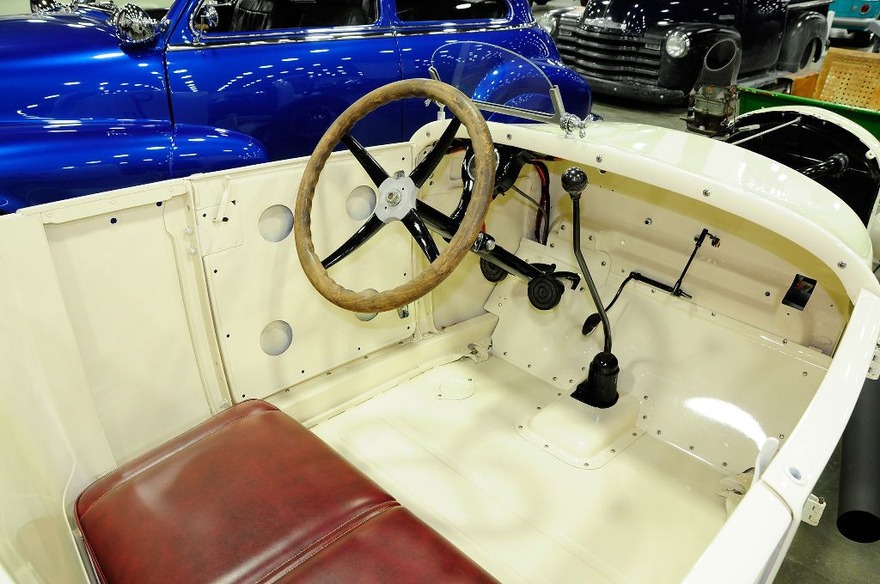
Of the instruments used by a lone speedometer 32'Ford. Stylish old-fashioned wooden steering wheel is made from scratch, while the actual steering borrowed from the pickup 46'Chevy.
Amid all this bare metal simply still palace luxury looks “zero” leather seat made Mike Scholl of Sholley's Trim Shop of Dillisburga that in Pennsylvania. Please note that the seat is not as such rest — it actually performs the role of the body. It is not a real hot-rod “to the bone” ?!
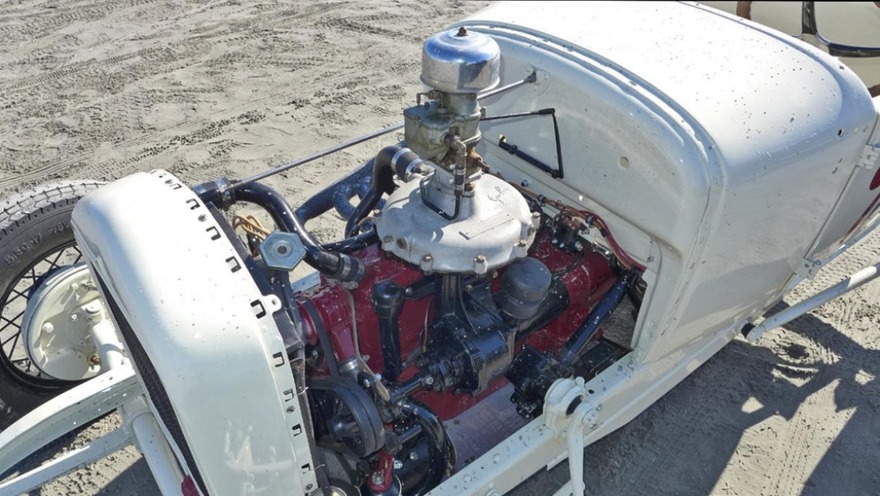
As mentioned, it was created by Bates Clark not only as a means of expression, but also for competition. And already the first leaving Clark to “Gentleman Race” proved to be more than effective. His brand new 26'Ford Bates helped win 5 out of 10 of his starts.
And ahead of them probably more than one rally and the race, as well as Clark can go on this “kind” and only on weekends to unwind in the fresh air, which will not interfere with nothing but a little old-fashioned sports windshield glass.
Photo hotrod.com and open source

Of the instruments used by a lone speedometer 32'Ford. Stylish old-fashioned wooden steering wheel is made from scratch, while the actual steering borrowed from the pickup 46'Chevy.
Amid all this bare metal simply still palace luxury looks “zero” leather seat made Mike Scholl of Sholley's Trim Shop of Dillisburga that in Pennsylvania. Please note that the seat is not as such rest — it actually performs the role of the body. It is not a real hot-rod “to the bone” ?!

As mentioned, it was created by Bates Clark not only as a means of expression, but also for competition. And already the first leaving Clark to “Gentleman Race” proved to be more than effective. His brand new 26'Ford Bates helped win 5 out of 10 of his starts.
And ahead of them probably more than one rally and the race, as well as Clark can go on this “kind” and only on weekends to unwind in the fresh air, which will not interfere with nothing but a little old-fashioned sports windshield glass.
Photo hotrod.com and open source









